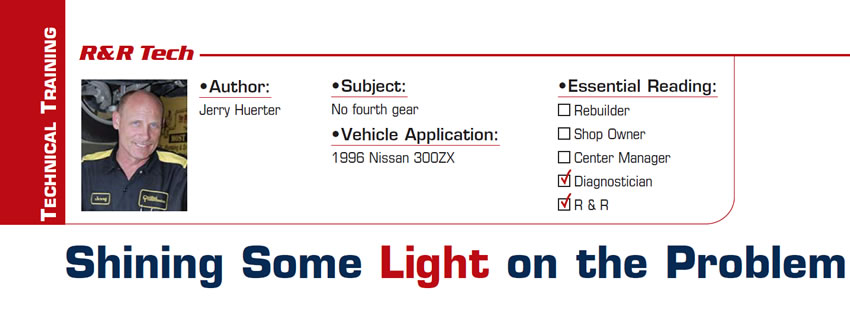October 2010 Issue
In This Issue
Mitsubishi F4A40/50 or F5A50 Series Transmissions: Harsh upshift to third and/or harsh downshifts
Volkswagen 09A/Mazda JA5A-EL; Jaguar & Land Rover JF506E: Solenoid identification
Isuzu 4L30-E: Stuck in first gear
Summary:
Some 2004-up Mitsubishi vehicles with the F4A40/50 or F5A50 series transaxles may exhibit a harsh upshift into third gear and/or harsh downshifts after overhaul.
Different car manufacturers using the 09A (JA5A-EL, JF506E) use different names for the same solenoids, creating confusion in diagnosis of solenoid codes.
A 4L30-E in an Isuzu Trooper or Rodeo is stuck in first gear, and the TCM is giving the shift-solenoid command for first gear only.
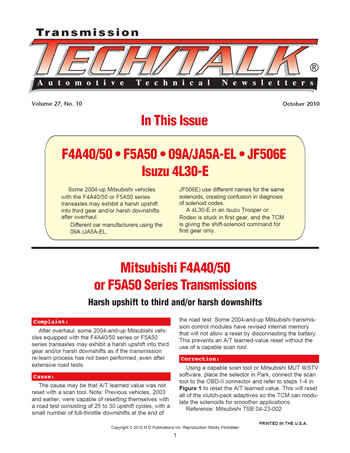
Manual-Valve Confusion
While doing research on the Aisin AW six-speeds, I found that the Ford/Mazda (TF81-SC) manual valve and the Volvo (TF80-SC) manual valve are almost identical. Both look the same at a glance, but up close there are critical differences. I also noticed that these two valves are just about the same as an AW55-50 manual valve. All three have the same outside diameter of 0.471 inch. Even the “Z” links look the same until you lay them side by side (do not interchange the valves or the “Z” links).
F-150 Throttle’s Sensor Goes Amuck
Seemingly subtle variances in signals from sensors can trigger major changes in fuel and emission controls. Such was the case in my most-recent adventure into solving a drivability problem for a friend who owns a shop across town from me. This fellow doesn’t give up on problem jobs and sends cars to the dealer only for absolutely necessary things such as programming of computers. When we discussed the problem he was having with this 2004 Ford F-150 5.4 engine, it sounded like a problem that wouldn’t be too difficult to resolve.

The Science of Synchronization
The next step in the design was synchronization. To synchronize means to coordinate several events to take place at the same time. Soldiers synchronize their watches before a mission to make sure everyone is on the same time schedule. Synchronized transmissions are easy to use, eliminating the driver’s having to match shaft speeds for each shift and creating a smooth, clash-free gear engagement with only a clutch release necessary. Synchronizers are one of the most-misunderstood parts of the transmission, and as with zippers everyone knows how to use one but most people have little or no clue as to how they work.
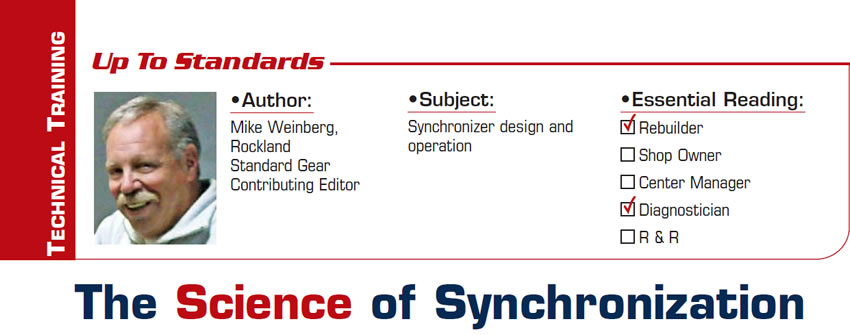
Wave Forms Provide Key to Diagnosis
I’m sometimes asked why I take on some vehicles that require more time to fix than I can charge for. My answer is, “because I like the challenge”; besides, you get to learn things you probably wouldn’t have an opportunity to see otherwise. Let me use this 1934 Ford Tudor Sedan (Figure 1) with a late-model GM drivetrain as an example.
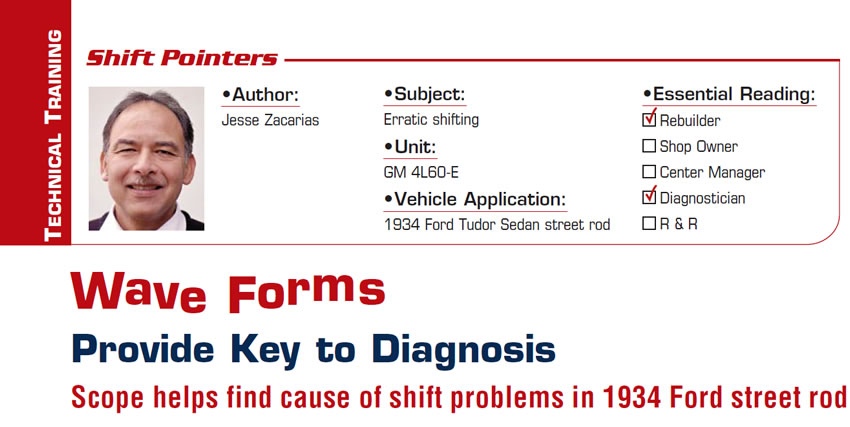
In Remembrance of two Industry Icons
Our industry has matured to the point where some of its pioneers have taken leave of it and of us. They’ve moved on from this world to one that will hopefully know of and appreciate the efforts they put forth while they were here.
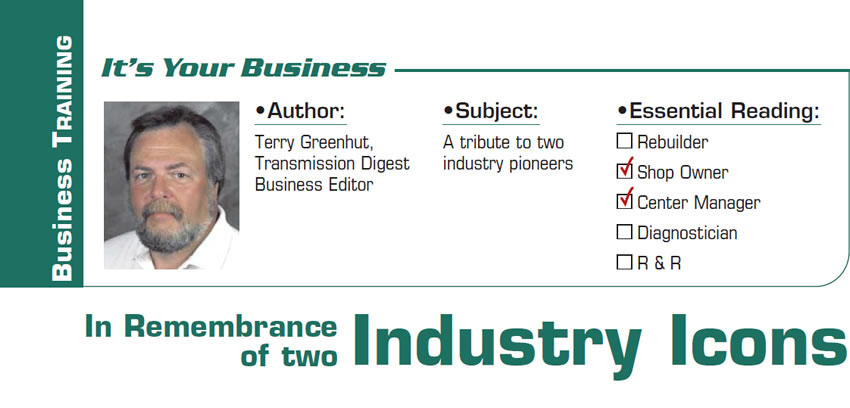
Upgrading the Flat TCC Pistons for the 4L30-E & 4T65-E
The 4T65-E and 4L30-E share a number of issues related to the torque-converter clutch (TCC). Both transmissions are notorious for their TCC-application and shudder problems. A root-cause analysis of each application yielded similar results.
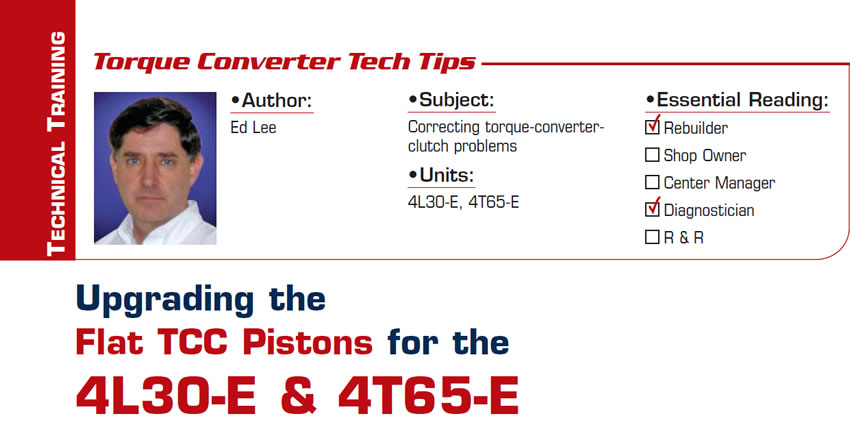
GM’s 2MT70
Getting into the valve body is all we need to do to finalize our brief look at GM’s front-wheel-drive two-mode hybrid transmission.
If you recall from the first article, the TCM and solenoid-body assembly is first removed from the transmission followed by the plate attaching the assembly to the valve body (figures 1, 2 and 3).
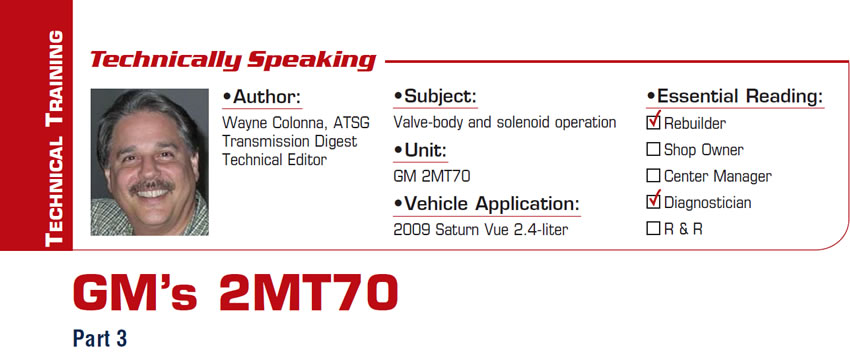
Shining Some Light on the Problem
A 1996 Nissan 300ZX came into the shop last summer. Remember, I said it was summer, which affects this story later.
The customer said the check engine light was on and that at times the transmission would not shift into fourth gear. I scanned the computer and found a P0705 inhibitor-switch code. I cleared the code and went for a test drive with the scan tool connected. Inhibitor-switch data was correct, and the code did not reset.
